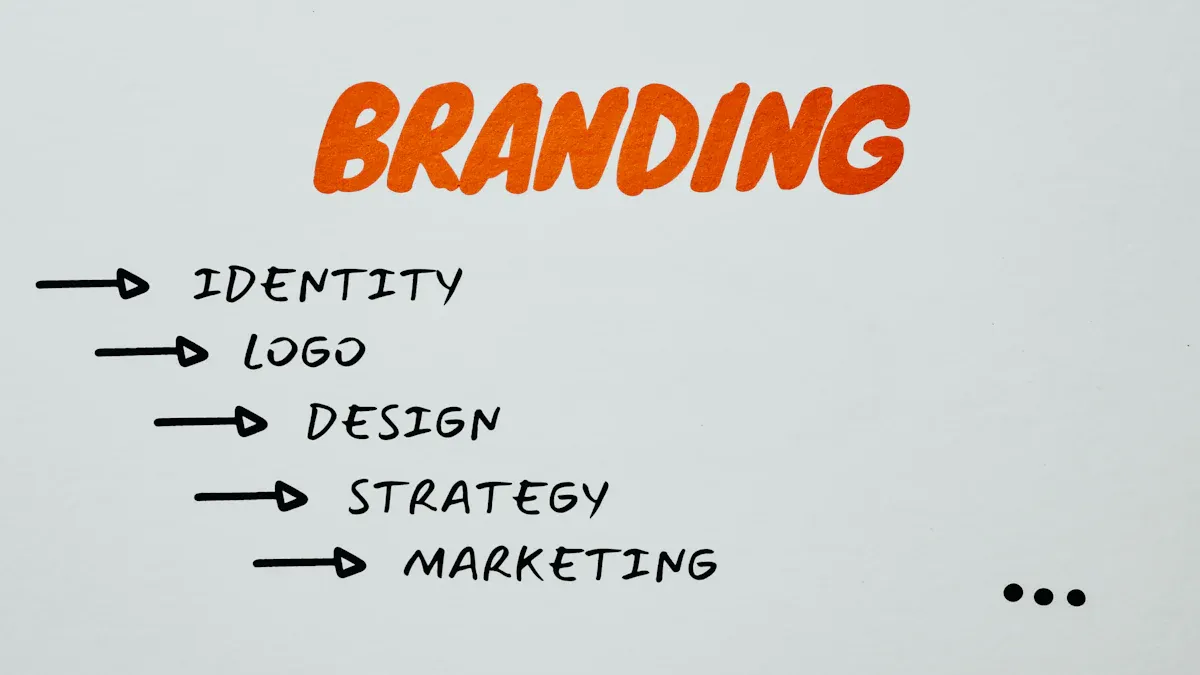
Building Trust Through Consistent Digital Branding
Table Of Contents
The average person encounters thousands of brand messages daily, a figure amplified by the constant stream of content across digital platforms. In this crowded arena, brands that resonate deeply and build lasting connections are those that communicate with an unwavering, clear voice. This clarity is not a matter of chance; it’s the outcome of a deliberate approach to consistent digital branding. But what does it truly mean to achieve this consistency, and why is it so pivotal for cultivating trust and recognition with your audience, especially when launching or growing a new venture?
Understanding the Core of Brand Consistency
Ever noticed how some brands just feel familiar, no matter where you see them? That’s the magic of brand consistency. For entrepreneurs and individuals stepping into the world of formal branding, understanding this concept is the first step towards building something memorable. So, what exactly is it? Brand consistency is the practice of presenting your brand’s identity, its core messages, and its values in a uniform way across every digital touchpoint. Think of your website, social media profiles, email newsletters, and any apps you might develop; the goal is to create an experience that’s predictable and instantly recognizable to your audience.
This isn’t just about looking good; it’s a strategic imperative. Consistent digital branding forms the bedrock upon which you build brand recognition, foster genuine trust, and cultivate lasting loyalty. Imagine the alternative: if your message changes from your Instagram to your website, or your visuals clash, it can fragment your marketing efforts. Customers might get confused, and the overall impact of your brand gets diluted. It’s like trying to tell a story with mismatched pages; the narrative gets lost.
Now, consistency doesn’t mean being boring or rigidly repetitive. While your core elements like your logo, color palette, typography, and brand voice should remain steadfast, there’s plenty of room for creativity. The key is to adapt your content format and delivery to suit the unique context of each platform, all while preserving the essential spirit of your brand. It’s about singing the same song, but perhaps with different instruments depending on the venue.
For new brands or startups, especially those working with limited resources, achieving this might seem like a tall order. You might be juggling multiple roles, and formalizing branding can feel like another task on an already long list. However, the long-term value is immense. Investing in consistency from the outset helps prevent brand dilution, allows you to build a market presence more efficiently, and ensures that your future marketing efforts are scalable and impactful. Think of it as laying a strong foundation; it makes building the rest of your brand house much easier and more stable.
The Psychological Impact of Cohesive Branding
While the previous section laid out what brand consistency is, let’s explore why it’s so powerful. The effectiveness of cohesive branding isn’t accidental; it taps into fundamental aspects of human psychology, influencing how consumers perceive and interact with your brand.
Instilling Trust and Credibility
First, consistent branding instills a profound sense of trust and credibility. When your brand presents itself uniformly across all channels, it signals professionalism, reliability, and stability. It’s like meeting someone who is consistently themselves in every interaction; you naturally feel more at ease. This attention to detail suggests that the brand is well-managed and dependable. Conversely, a brand that looks and sounds different from one platform to another can come across as disorganized or even untrustworthy, making potential customers hesitant.
Boosting Recognition and Recall
Next, consider how quickly you recognize a familiar logo or color scheme. This is one of the key brand consistency benefits: it significantly boosts recognition and recall. Our brains are wired to find patterns. Consistent visual and verbal cues act like mental shortcuts, helping your audience quickly identify your brand amidst the digital noise. This ties into what psychologists call the mere-exposure effect, where familiarity often breeds preference. The more consistently people see your brand presented, the more likely they are to remember it and feel positively towards it.
Forging Emotional Connections
Beyond just recognition, consistency plays a crucial role in forging emotional connections. Brands are more than just products or services; they evoke feelings. When your brand consistently delivers on its promise and maintains its distinct personality – whether it’s playful, sophisticated, or nurturing – it reinforces positive emotional responses. This predictability in experience allows customers to build a deeper, more meaningful bond with your brand, turning casual buyers into loyal advocates.
Simplifying Consumer Decision-Making
Finally, a cohesive brand simplifies the consumer decision-making process. In a world saturated with choices, consistency reduces cognitive load. When customers encounter your brand on a new platform and it feels familiar, they don’t need to spend mental energy re-evaluating who you are or what you stand for. This creates a unified brand experience that feels intuitive and effortless, leading to more favorable perceptions and making it easier for them to choose you. Think about your favorite app – its consistent design makes it easy to use, right?
Research in consumer psychology often underscores this link. For instance, findings discussed by sources like Nielsen on brand trust frequently highlight that consumers are more inclined to trust, and therefore engage with, brands that present a stable and predictable image across all their interactions.
To put it simply, the psychological advantages are clear. Consistent branding helps to:
- Build a perception of professionalism and reliability.
- Make your brand easily identifiable and memorable.
- Cultivate deeper emotional ties with your audience.
- Make it easier for customers to understand and choose your brand.
The table below further illustrates how these psychological factors play out:
| Psychological Factor | Impact of Consistent Branding | Impact of Inconsistent Branding |
|---|---|---|
| Trust Perception | Viewed as professional, reliable, stable | Perceived as disorganized, unreliable |
| Brand Recall | Easily recognized, memorable | Difficult to identify, forgettable |
| Emotional Connection | Fosters loyalty, positive associations | Creates confusion, emotional disconnect |
| Cognitive Effort | Low effort, intuitive interactions | High effort, confusing journey |
| Credibility | Appears established, detail-oriented | Seems amateurish, lacking attention |
Key Elements for Uniformity Across Platforms
Having explored the psychological power of consistency, let’s get practical. What specific components of your brand need to be aligned to achieve that seamless feel? Ensuring uniformity across platforms isn’t just about repeating yourself; it’s about orchestrating key elements to work in harmony.
Harmonizing Visual Identity
Your visual identity is often the first handshake with your audience. This means consistent use of your logo – ensuring you’re using the correct versions with adequate clear space around it – along with your defined primary and secondary color palettes. Typography hierarchies, the style of your imagery (be it photography or illustration), and the overall design language must be harmonious. These elements create an immediate visual shorthand for your brand. For those looking to dive deeper into crafting these foundational visuals, understanding how to design a brand identity is a great starting point.
Maintaining a Consistent Brand Voice and Tone
Beyond visuals, your brand’s voice and tone are critical. How do you speak to your audience? Is your language formal, witty, empathetic, or direct? This personality, reflected in your website copy, social media posts, email communications, and even customer service interactions, must be consistent. The terminology you use should align with your core values and resonate authentically with your target audience, making them feel like they’re talking to the same entity every time.
Standardizing Core Messaging and Value Proposition
What does your brand stand for? What unique value do you offer? Your core messaging and value proposition must be communicated clearly and consistently across all touchpoints. Whether a customer discovers you on LinkedIn, your blog, or through an ad, they should immediately grasp your unique selling points (USPs) and what makes you different. This clarity is absolutely vital for building a strong multiplatform brand identity; there should be no guesswork involved for your audience.
Ensuring a Seamless User Experience (UX)
Finally, don’t overlook the importance of a seamless user experience (UX). This applies particularly to your digital properties like your website and any applications. Navigation logic, interaction patterns, button styles, and the overall flow should feel coherent. When users can intuitively move through your digital spaces because the experience is consistent, it reinforces feelings of reliability and satisfaction. A clunky or disjointed UX on one platform can undermine the trust built elsewhere.
To ensure your brand presents a united front, focus on these four key areas:
- Visual Identity: Consistent logos, colors, typography, and imagery.
- Brand Voice and Tone: Uniform language, personality, and style in all communications.
- Core Messaging: Clear and consistent communication of your value proposition and USPs.
- User Experience (UX): Coherent navigation and interaction patterns across digital properties.
Practical Steps to Implement and Maintain Brand Consistency
Understanding the ‘what’ and ‘why’ of brand consistency is essential, but how do you actually put it into practice and keep it going? Implementing and maintaining this uniformity requires a deliberate approach and ongoing effort. Here are some practical steps to build a robust digital branding strategy.
Develop Comprehensive Brand Guidelines
The cornerstone of brand consistency is a set of comprehensive brand guidelines, often called a brand book or style guide. This document is your brand’s bible. It should meticulously codify all your visual elements (logo usage, color codes, typography), define your brand voice and tone, lay out your core messaging, and even include platform-specific considerations. It’s the reference point for anyone creating content or communications for your brand. If you’re wondering where to begin, resources like a brand style guide template can provide a solid foundation.
Leverage Tools and Templates for Efficiency
Manually ensuring every piece of content aligns with your guidelines can be overwhelming, especially for lean teams. This is where tools and templates come in to boost efficiency. Using pre-designed templates for social media graphics, email newsletters, or presentations ensures visual consistency. Content calendars help plan and align messaging. Digital Asset Management (DAM) platforms keep approved logos, images, and other brand assets organized and accessible. Consider tools such as:
- Design platforms like Canva for creating on-brand visuals with templates.
- Project management tools like Asana or Trello for content calendars and workflow management.
- DAM systems like Brandfolder or Bynder for centralized brand asset storage.
These resources streamline the creation process and help maintain standards with less effort.
Conduct Regular Brand Audits
Brand consistency isn’t a ‘set it and forget it’ task. It’s an ongoing process that requires vigilance. Conduct regular brand audits by systematically reviewing all your digital platforms – website, social media profiles, email campaigns, advertisements. The goal is to ensure adherence to your guidelines, identify any inconsistencies that may have crept in, and promptly correct these deviations. Think of it as a regular health check-up for your brand’s presentation.
Foster Team Alignment and Training
Your brand is represented by everyone who communicates on its behalf, whether they are in-house employees, freelancers, or partner agencies. Therefore, fostering team alignment and providing adequate training is crucial. Ensure that everyone involved not only has access to the brand guidelines but also understands the importance of adhering to them. Regular training sessions, clear communication channels for brand-related questions, and cultivating a shared commitment to consistency will make your guidelines truly effective. As highlighted by branding experts, for instance at Smashing Magazine, effective brand guidelines are living documents that evolve with the brand while ensuring core principles remain intact, and team understanding is key to this evolution.










